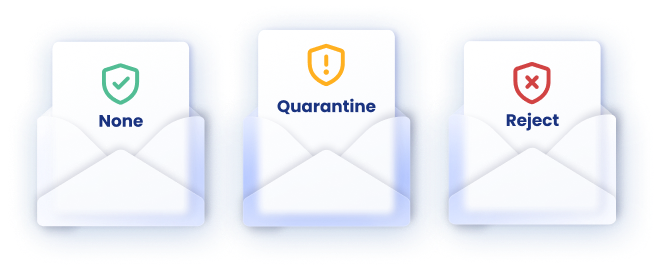DMARC Policy
A DMARC policy is a set of rules that domain owners create to tell email servers how to handle emails that fail authentication checks like SPF and DKIM. It helps prevent email spoofing, phishing, and domain misuse by ensuring only authorized emails can be sent from a domain.
The policy allows domain owners to specify how to treat emails that fail authentication, ensuring better security and trust. By implementing a DMARC policy, businesses protect their brand reputation and secure email communication from cyber threats.
